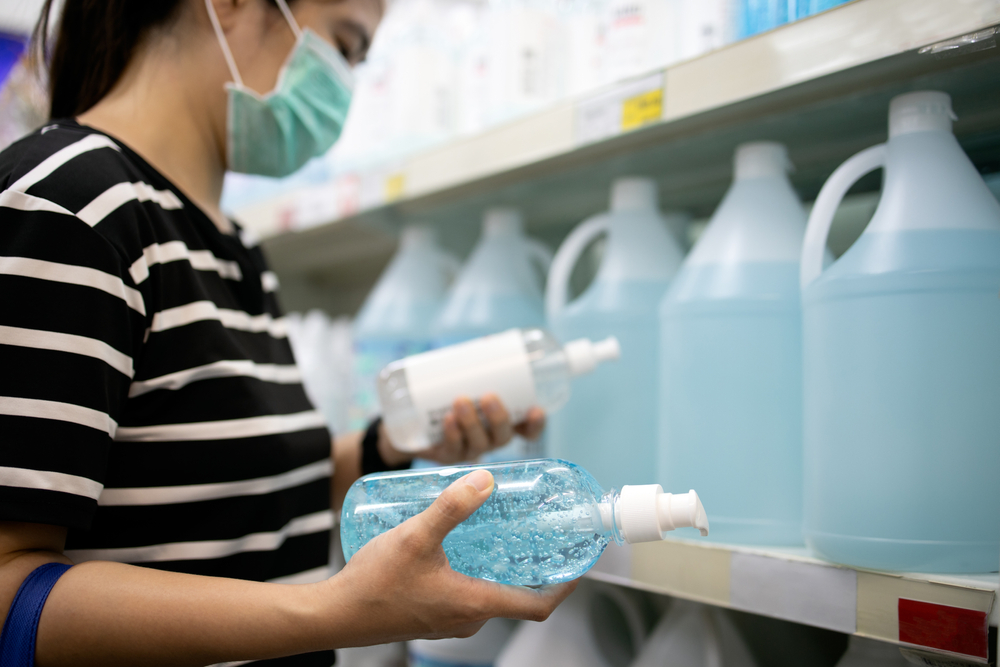Get a Free Estimate
Your information will not be shared. Safe Spray will send you a custom estimate.

Best shopping for disinfectant solutions and most household cleaners, ranging from dish soap to all-purpose cleaners, have surfactants, which bond to germs, dirt, and oil particles, thus suspending them in water to be easily washed away. While washing your hands for at least 20 seconds removes 97% of germs, household cleaners are the disinfectant option to clean surfaces. This is because soap must be worked and rubbed into a lather to be effective, whereas disinfectants kill on contact.
When shopping for disinfectant solutions, it is essential to know what ingredients to look for to ensure the product you purchase will effectively disinfect. Keep reading to learn more about these ingredients!
Is My Cleaning Product Effective?
Different disinfectant brands use different terminology on their labeling, with the most common being disinfecting, sanitizing, and antibacterial. Have you ever considered what these mean and if they are effective disinfectants? Let’s find out.
Statistics show that sanitizing eliminates 99.9-percent of germs while disinfecting removes over 9.999% when applied according to the instructions. Antibacterial products contain ingredients that help slow the growth of or kill bacteria, but that does not mean it is as effective as sanitizing or disinfecting. Antibacterial products are not any better than using regular soap. That means to kill a powerful parasite like COVID-19, you must utilize a proper disinfectant, not an antibacterial or sanitizing product.
What Do I Look for on Disinfectant Solution Packaging?
Disinfectant solutions are powerful germ-killing machines but are not as effective on dirty surfaces because oil and dirt consume the disinfectant particles to protect germs. For this reason, the Centers for Disease Control and Prevention recommends first cleaning the surface with water and soap then use disinfectant solutions.
When purchasing a disinfectant, always look for the Environmental Protection Agency (EPA) registration number on the packaging. These are typically displayed on the front or back label panel. The EPA allocates these numbers to products that have been proven, through testing, to kill germs effectively. For a manufacturer to obtain a registration number, they must submit a series of lab test descriptions and results of the formula and production process to be reviewed and approved by the EPA.
What Disinfectant Ingredients Should I Look For?
To prevent the coronavirus spread, the EPA creates a list of cleaning product ingredients that work against COVID-19 and other germs. The most common active ingredients in these disinfectants include:
Ethanol or Isopropanol (Alcohol)
Alcohol is an effective and common disinfectant when used in high concentration. To be effective, cleaning products must contain at least 70-percent alcohol, and hand sanitizers should be comprised of 60-percent. Remember, these products become less effective over time because of evaporation.
Hydrogen Peroxide
Although not as strong as bleach, Hydrogen Peroxide contains disinfectant properties that kill bacteria and viruses. In a 2018 study from Antimicrobial Resistance and Infection Control, hydrogen peroxide was more a more effective bacteria killer than quaternary ammonium compounds. Most commercial disinfectants have a three-percent hydrogen peroxide concentration.
Quaternary Ammonium Compounds
Quaternary ammonium compounds are widely used as disinfectants and are found in most household cleaners, including sprays and wipes. Research proves that quaternary ammonium compounds effectively kill most fungi, viruses, and bacteria.
Sodium Hypochlorite (Bleach)
Sodium hypochlorite is the active ingredient in bleach, which kills fungi, bacteria, and viruses. Bleach can regularly be used on countertops and doorknobs but must air dry for a minimum of 10-minutes before wiping. Since bleach can irritate sensitive skin, it is essential to wear gloves during use.
Although cleaning surfaces and your hands with soap is a significant step in the right direction by removing 97-percent of germs, it doesn’t take you past the finish line. There are numerous disinfectant products on the market, so it is important to consider these ingredients when looking. And remember, always clean high-traffic surfaces regularly and wash your hands thoroughly!

Get Your Free Quote Today!
We also offer a no obligation, free onsite service estimate.

 Get a free Consultation
Get a free Consultation